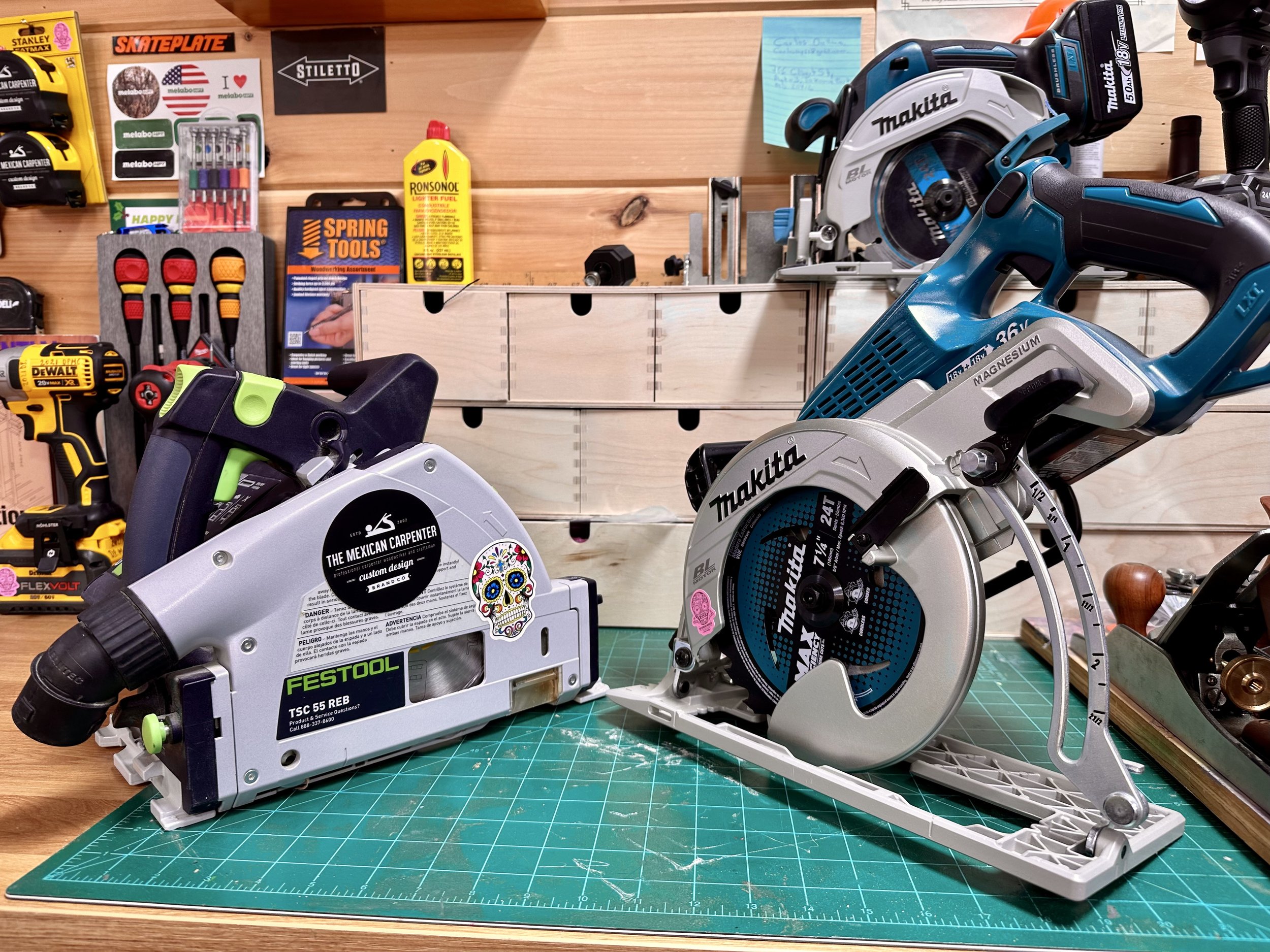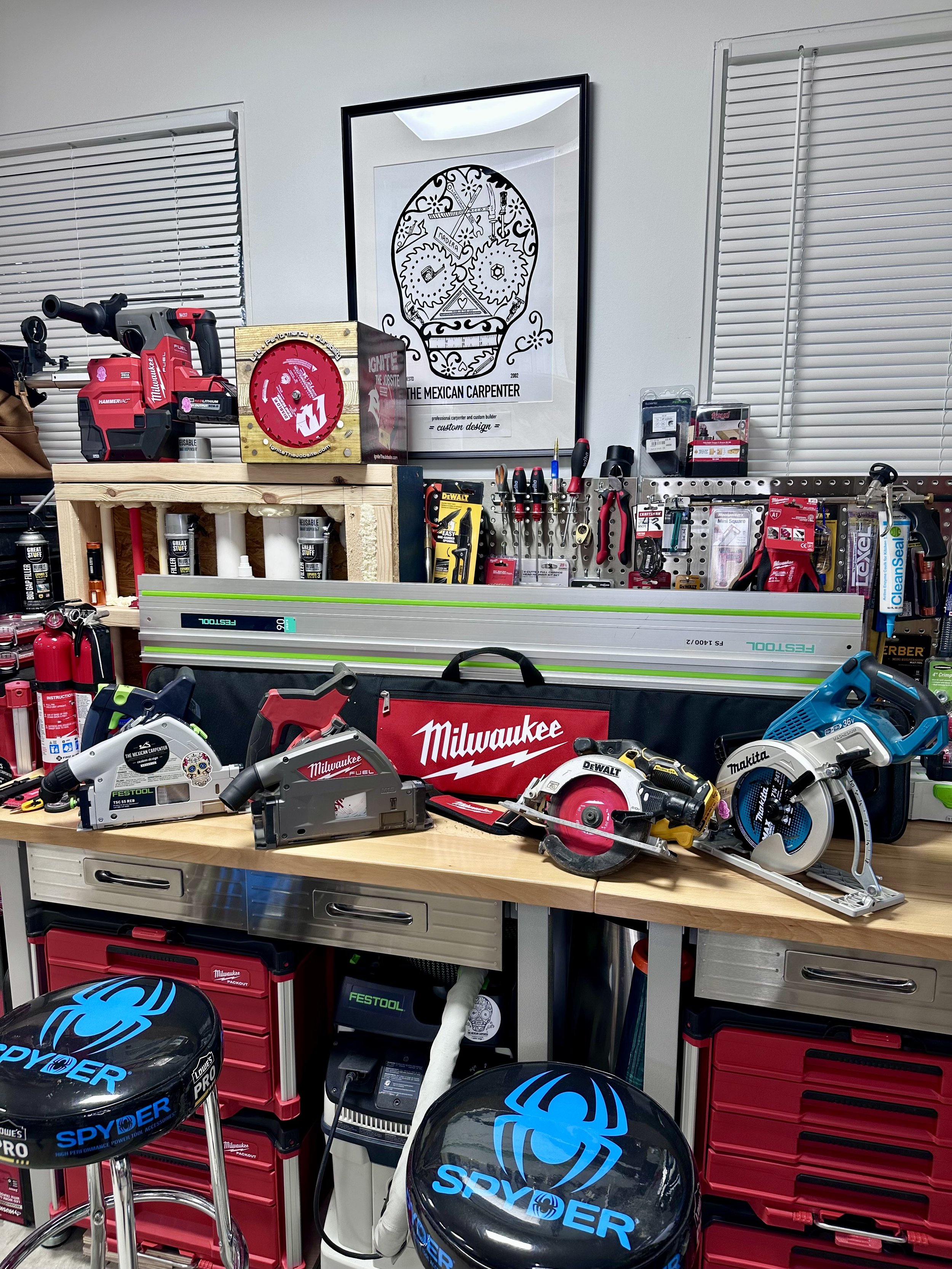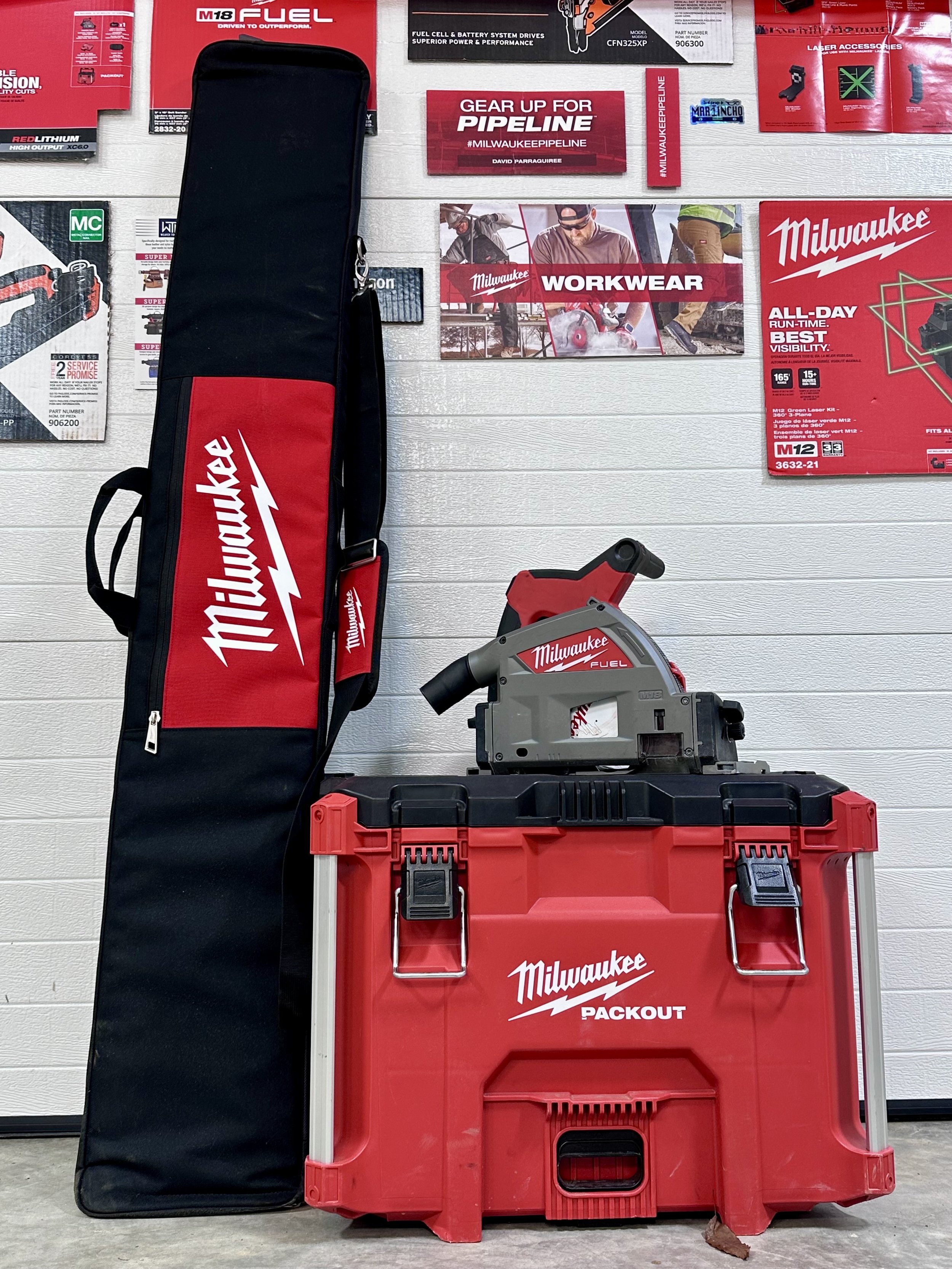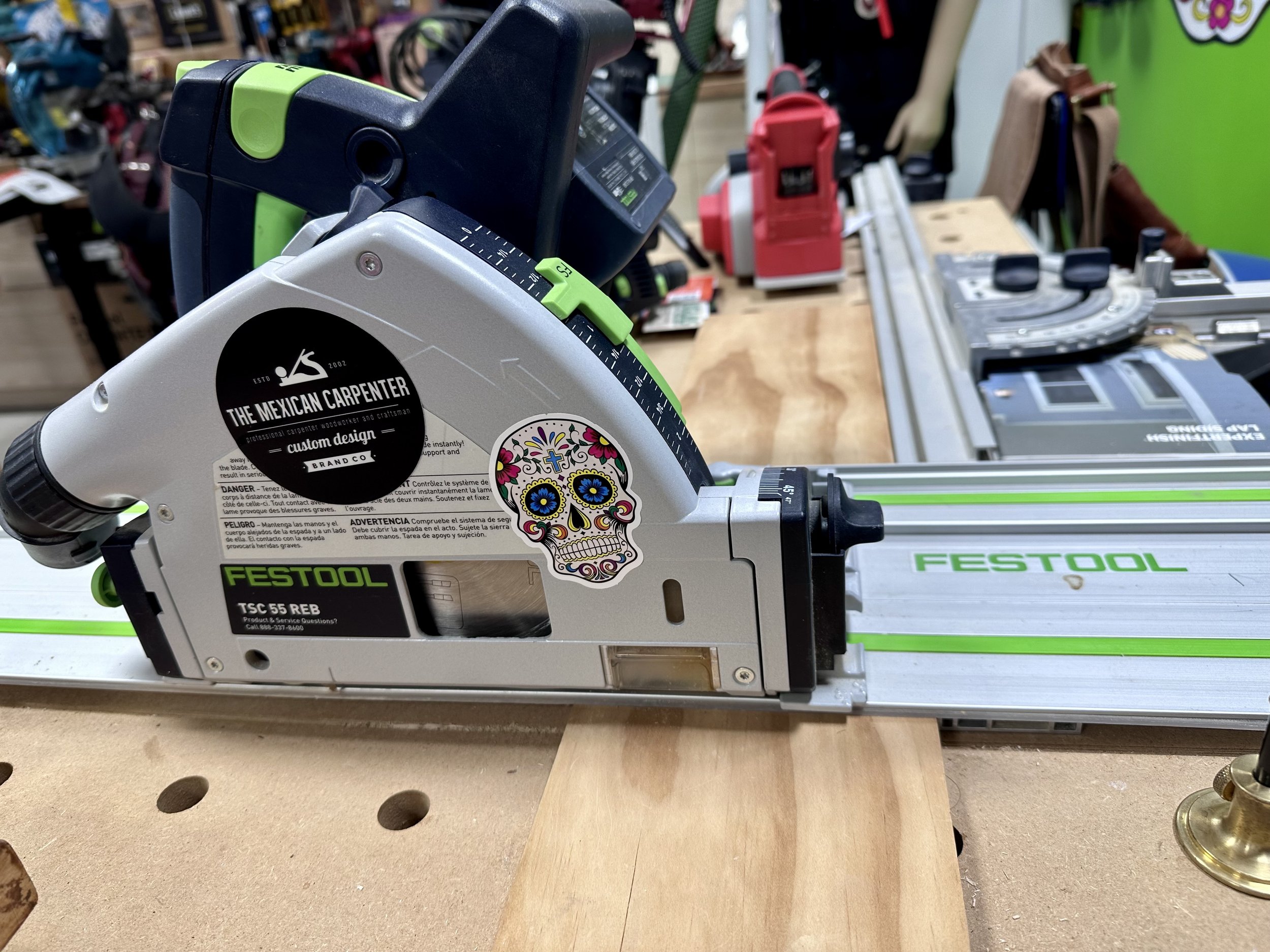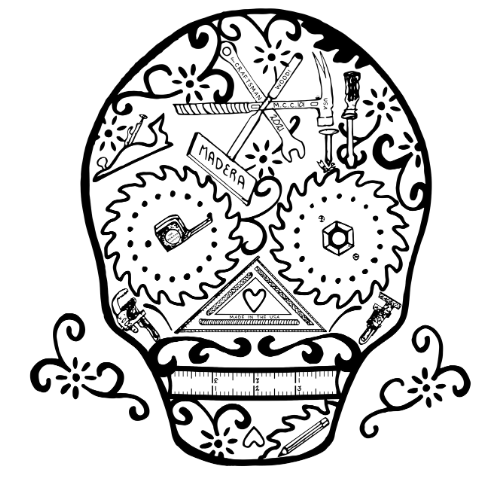Circular saw VS Track saw
Exploring the pivotal tools for precise cuts in construction, the debate between the standard handheld circular saw and the track saw sparks interest. The handheld circular saw, a hallmark of versatility and portability, stands as the go-to for varied cutting applications, allowing users to maneuver through diverse materials with ease. Conversely, the track saw, armed with a dedicated guidance system, boasts unparalleled accuracy, offering craftsmen the precision needed for flawless, straight cuts over extensive lengths. While the circular saw's affordability and adaptability resonate with many, the track saw's investment promises unrivaled consistency and accuracy, making it a reliable choice for woodworking aficionados seeking perfection in their projects. Let's delve into these tools' nuances—precision versus adaptability—to uncover the best fit for your construction arsenal.
A standard handheld circular saw and a track saw serve similar purposes but have some key differences:
Track Guidance System:
Standard Circular Saw: It doesn’t have a track or guide system built-in. The user relies on their own skill to guide the saw along a straight line, using a separate guide or freehand cutting. Some of the guide accessories like a Squi jig or guide system like Skateplate can aide in cut accuracy as well as a framing square for shorter cuts.
Track Saw: Comes with a track or guide rail that the saw runs along. This ensures precise and straight cuts without the need for additional guides. The track system allows for accurate, repeatable cuts, especially for long or large materials.
Portability and Versatility:
Standard Circular Saw: It's typically more portable and versatile since it can be used in various applications without relying on a specific track or guide system.
Track Saw: While it offers precise cuts along the track, it might be less versatile because it heavily relies on the track for accuracy. It's ideal for straight cuts but might not be as useful for other types of cuts or applications.
Cutting Depth and Bevel Cutting:
Standard Circular Saw: Generally offers greater cutting depth compared to most track saws. It also allows for bevel cuts at different angles without much hassle.
Track Saw: Might have limitations in cutting depth depending on the model. Bevel cutting might require adjustment or additional accessories.
Precision and Accuracy:
Standard Circular Saw: Requires a steady hand and skill to maintain straight cuts. It might not provide the same level of precision as a track saw, especially for longer cuts or when accuracy is crucial.
Track Saw: Offers superior precision and accuracy for straight cuts due to the guide rail. It's especially beneficial for woodworking or tasks that require consistent, precise cuts.
Cost and Investment:
Standard Circular Saw: Generally more affordable and accessible for casual users or those not requiring extreme precision for their cuts.
Track Saw: Can be more expensive due to the specialized track system. It's often an investment for professionals or serious woodworking enthusiasts who require high precision and repetitive accuracy.
In summary, while both tools have their merits, a standard circular saw is more versatile and portable, suitable for various cutting tasks. On the other hand, a track saw excels in precision and accuracy for long, straight cuts due to its dedicated guide rail system, making it ideal for professional woodworking or tasks demanding consistent accuracy.
Track saw
Festool TSC 55 Cordless track saw Sitting on its guide rail system
Circular Saw
Milwaukee M18 Worm drive Circular saw (top)
Milwaukee Chorded Circular saw (Bottom)


